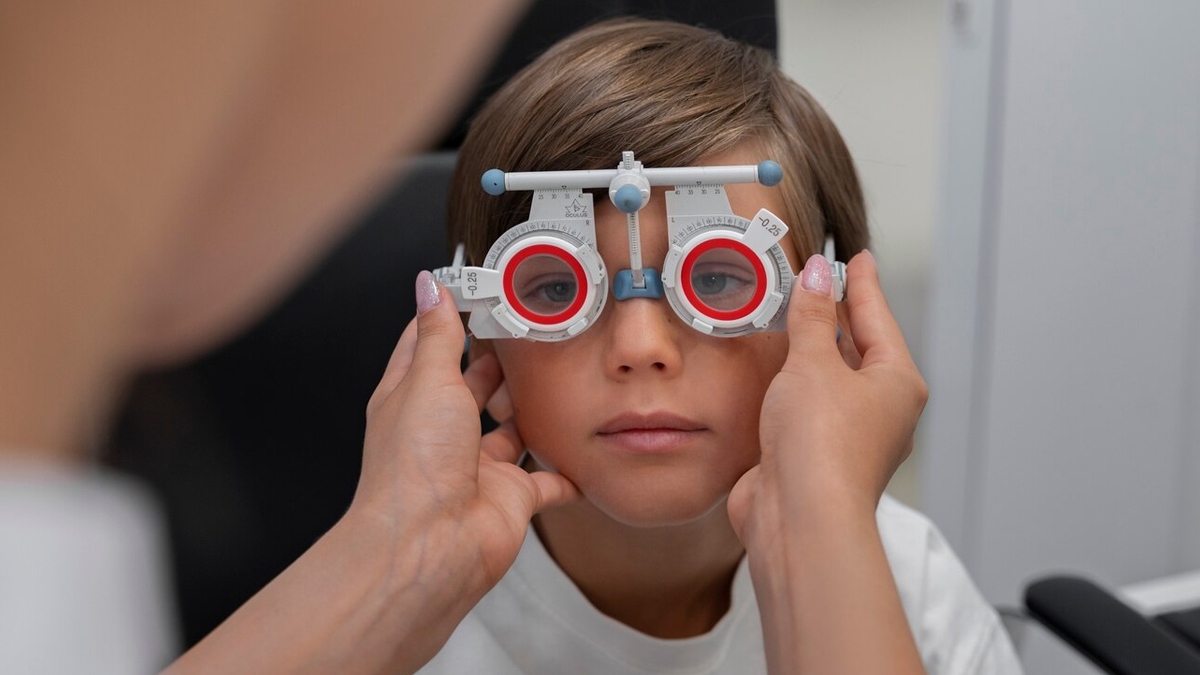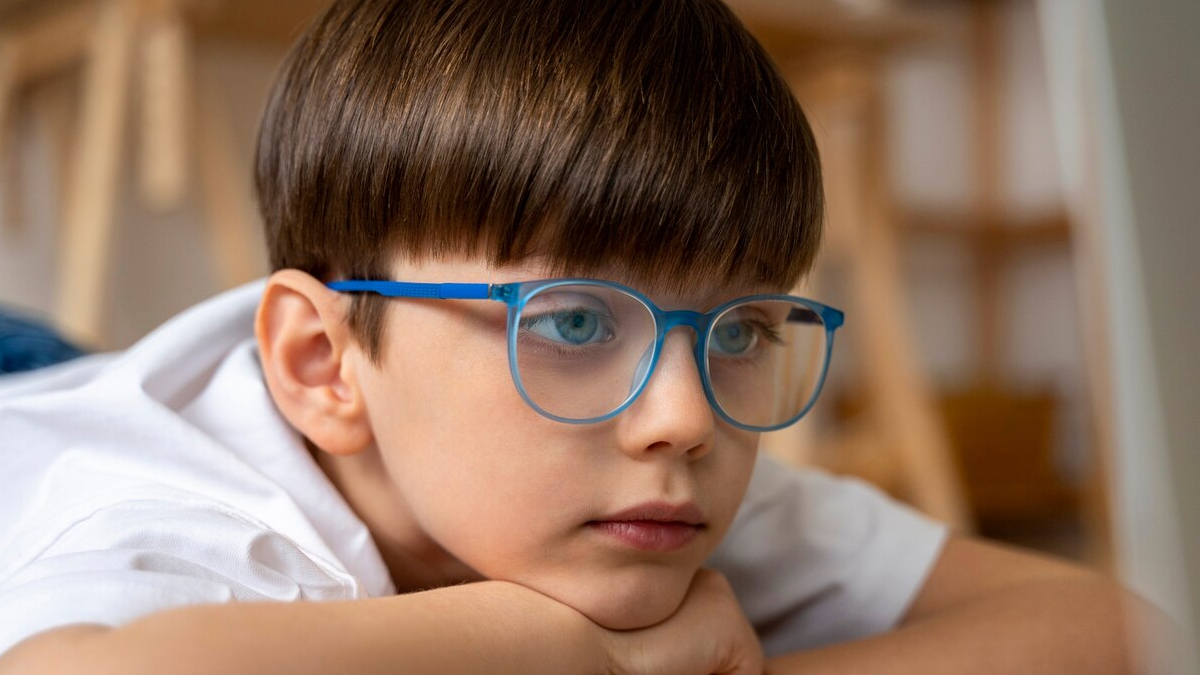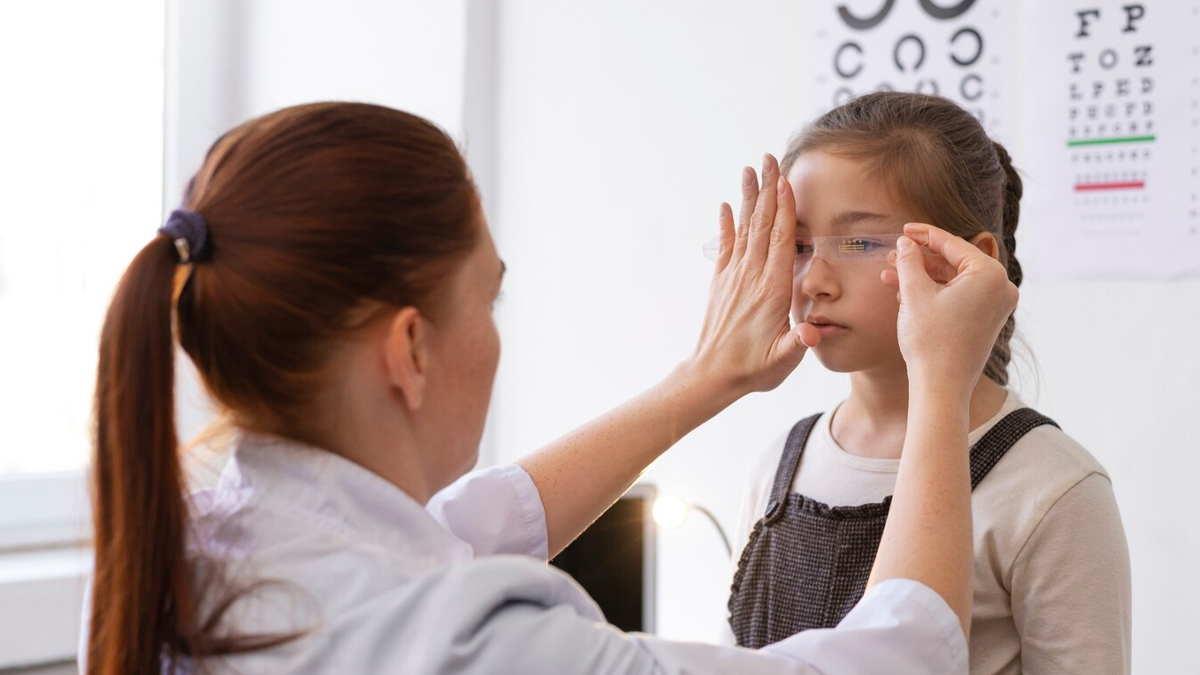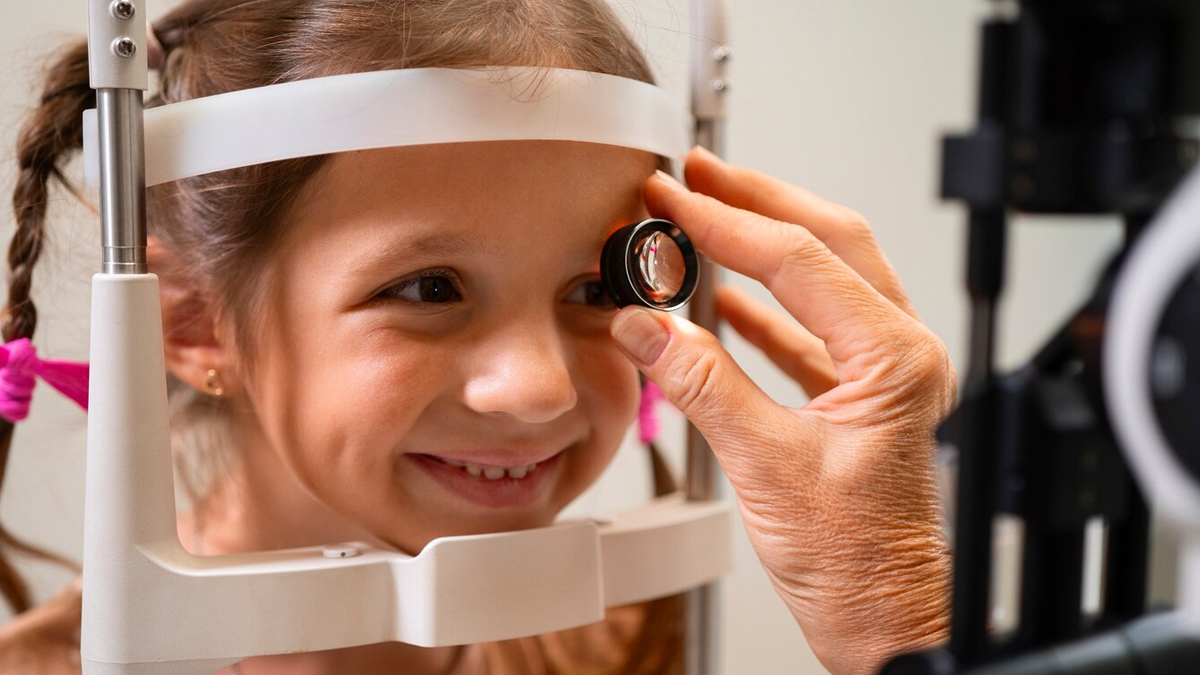
When it comes to weak eyesight and poor vision, age is a common risk factor. However, one eye-related illness is more prevalent among young children than in adults. This condition is called myopia, or nearsightedness, in which objects close to the eye look clear but those that are far away seem blurry and unclear.
Table of Content:-
Unfortunately, there is no one particular reason why some children develop myopic eyes. Several factors can contribute to it, and parents should be vigilant about the early signs and seek the necessary help.
Speaking with the OnlyMyHealth team, Dr Aditi Sapovadia, Paediatric Ophthalmologist, Squint and Cataract Consultant at Netradeep Maxivision Eye Hospital, Rajkot, not only shares some of the common causes and risk factors for nearsightedness in kids but also discusses various ways to manage the condition.
Also Read: Too much screen time damages kids' vision
Understanding Myopia And Its Causes

Dr Sapovadia describes myopia as a refractive error where distant objects appear blurry while close objects remain clear.
It occurs when the eyeball is too long or the cornea is too curved, causing light to focus in front of the retina rather than directly on it, resulting in blurred vision, she explains.
According to the doctor, myopia in children can be caused by several factors. However, it is primarily influenced by genetics and environmental factors, she says.
Genetic predisposition plays a significant role, with children more likely to develop myopia if one or both parents are nearsighted.
Environmental factors such as excessive near work, prolonged screen time, and limited outdoor activities also contribute to the condition, as these factors can lead to abnormal elongation of the eyeball or changes in corneal curvature, causing light to focus in front of the retina.
In fact, a 2022 study published in the journal Cureus suggested that spending less time outdoors and more time on electronic devices might have worsened nearsightedness (myopia) in children during the COVID-19 pandemic.
How Does Myopia Affect Children?
According to Dr Sapovadia, myopia can significantly impact children's lives, affecting their academic performance, social interactions, and overall well-being.
“As nearsightedness progresses, it may lead to difficulties in seeing the board or screens in classrooms, hindering learning. Children with myopia might also struggle with outdoor activities, potentially impacting their physical health,” she says, adding that socially, myopia can affect self-esteem, if children feel different due to wearing glasses or contact lenses.
Moreover, myopia tends to worsen over time, increasing the risk of eye diseases like retinal detachment and glaucoma in adulthood, which makes early detection and intervention, such as regular eye exams and appropriate corrective measures, crucial.
Also Read: Expert Shares Ways To Take Care Of Your Kid's Eyesight From Early Age
Common Symptoms of Myopia

Some of the early symptoms and signs of myopia in children include the following:
- Squinting
- Difficulty seeing distant objects
- Frequent headaches
- Eye strain
- Eye squeezing
- Rubbing of the eyes
Dr Sarvovadia says, “To confirm the diagnosis, a comprehensive eye examination by an optometrist or ophthalmologist is essential. This typically involves visual acuity testing using eye charts, refraction testing to measure the degree of nearsightedness, and examination of the eye's structures. Additional tests may include assessing eye coordination and focusing ability.”
Treatment and Management

Unfortunately, myopia cannot be cured completely. However, its progression can be slowed or controlled through various methods.
“One approach is corrective lenses, such as glasses or contact lenses, to provide clear distance vision,” says the doctor, adding that orthokeratology involves wearing special contact lenses overnight to reshape the cornea temporarily.
Another option is prescription eye drops that can slow down myopia progression, the doctor recommends.
Moreover, lifestyle modifications, like spending more time outdoors and reducing screen time, may also help.
It is important to note that regular eye exams are crucial for monitoring progression and adjusting treatments as needed.
“While myopia can't be cured, managing it effectively can improve quality of life and prevent complications. Now, we have special types of glasses, like myovision glasses, which can help improve vision in myopic children,” the doctor concludes.
Read Next
Boy Falls Sick After Consuming 'Nitrogen Smoke Biscuit' How Liquid Nitrogen Can Be Hazardous
How we keep this article up to date:
We work with experts and keep a close eye on the latest in health and wellness. Whenever there is a new research or helpful information, we update our articles with accurate and useful advice.
Current Version